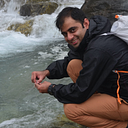TSP3 — Mandela, Pienaar, And The Game that United South Africa
Most of us cannot imagine what it means to live in a country raging with racial hatred. Fewer of us know what it means to be made the President of such a divided country.
Nelson Mandela knew that first hand in 1994. Apartheid had ended. He was the elected president. And the country in his hands was threatening to break apart. The Afrikaners, white descendants of Dutch, British and French, after oppressing the native Africans were considering leaving the country. Africans, the native black population, had just come out of decades of repression and did not know what to expect. Or perhaps they expected equal, brutal, and swift retribution on the Afrikaners.
The only way Africa could survive was by being a ‘Rainbow Nation,’ a country where all colours lived side by side in harmony.
But while Mandela forgave his oppressors, others weren’t willing. His Presidentship was a crown of thorns.
But he had no intention of letting Africa go down like this. He just needed to pull out a miracle. And the keen strategist in him found what he needed — South Africa was going to host the Rugby World Cup a year later.
Rugby was an Afrikaner’s game. African’s went to see rugby matches to cheer for the opposition team whom the Springboks — the South African team — were playing.
Could Rugby unite Africa? A game, a team, that is symbolic to their oppressors, could it allow Africans to integrate with them? It would be a year before the world would know.
Mandela invited Francois Pienaar, the Springboks captain, who shared his views on a unified Africa to join the quest.
What followed was a plan, a strategic elimination of mutual hatred by deliberately bringing people together.
For the nation to unite, the team had to unite first. So Pienaar worked within the team and made them open to the idea of having African players within their Afrikaaner team.
Mandela toured the nation, met politicians who had other agendas — abolish the Springbok name, replace the team with an all African team. Mandela resisted. Springboks weren’t a team. They were a symbol to Afrikaners. And one doesn’t unite with someone by breaking their symbols apart.
Springboks trained hard. And they toured South Africa. Their team bus stopping over in random villages and their players would set up rugby camps for kids for fun. The whole nation saw how the grand symbol of Afrikaaner pride was reaching out to the Africans and being one of them.
Then the world cup arrived. South Africa reached the finals against New Zealand. In the finals, Nelson Mandela took the biggest gamble of his time when he wore a Springboks jersey and stepped into the stadium. The African’s may think their elected leader was ridiculing their suffering. Or they may see that their leader was willing to put behind hatred for a better future.
The gamble worked. This time the African’s were cheering for Springboks.
When Springboks won that game, and the world cup, it was not just the trophy that Mandela handed out to Pienaar. It was the gratitude of an entire nation for believing in its capacity to unite again.
The Strategy Project
References:
Playing the Enemy: Nelson Mandela and the Game that Made a Nation, by John Carlin
Invictus, by Clint Eastwood
https://www.rugbyworldcup.com/news/568693
https://en.wikipedia.org/wiki/Francois_Pienaar
https://www.history.com/news/nelson-mandela-1995-rugby-world-cup-south-african-unity
